Should I Cut Back Perennial Geraniums? Tips for Thriving Blooms
When it comes to maintaining perennial geraniums in your garden, you might wonder about the best practices for keeping them healthy and vibrant. Cutting back your perennial geraniums can significantly enhance their growth, encouraging a fuller shape and more blooms. This straightforward technique, known as deadheading, involves trimming back stems after they have flowered to prompt new blossoms.
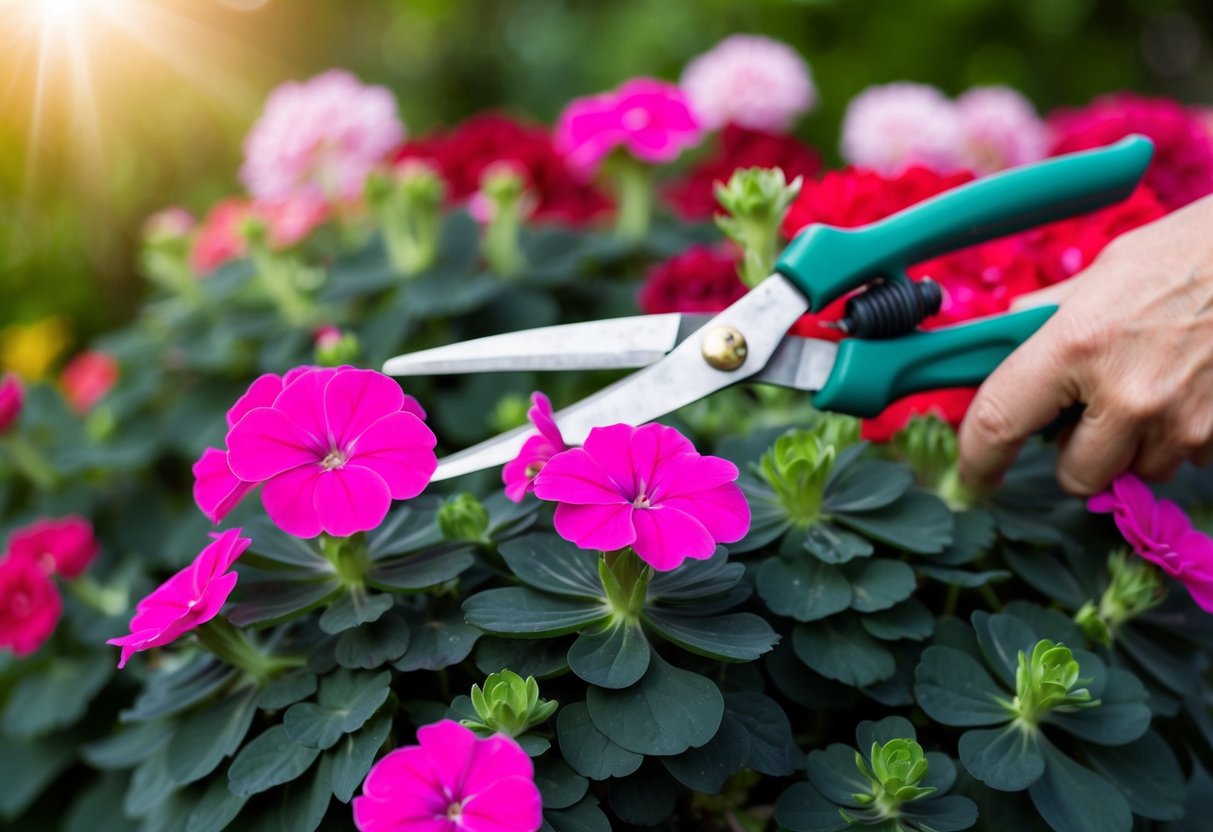
Pruning is a crucial part of gardening for these flowering plants. Learning how to properly pinch or snip the stems will keep your geraniums bushy and thriving. The process might seem simple, but it plays a significant role in the plant’s overall health and appearance.
If you find that your geraniums are looking a bit unruly or sparse, it might be a good time to give them a trim. Not only does this keep your plants aesthetically pleasing, but it also prevents them from channeling energy into seed production rather than new flowers. With a little attention to maintenance, your garden will be filled with colorful blooms all season long.
Understanding Perennial Geraniums
Perennial geraniums, often called hardy geraniums or cranesbill geraniums, are delightful plants for any garden. They bloom in shades of pink, purple, and white, adding vibrant color throughout spring and summer. The foliage, often a deep green, complements their flowers beautifully.
Care Tips:
- Sunlight: These plants thrive in full sun to partial shade, so choose a spot where they can soak up some rays.
- Soil: Plant them in well-drained soil. Slightly acidic soil is preferred, but they can adapt to different types.
- Water: Ensure regular watering, especially if they’re in a sunny location.
Pruning: Regular maintenance, such as pruning, helps them flourish. Cutting back old leaves can encourage new growth. Removing seedheads can also prevent the plant from looking untidy, enhancing its appearance.
Size: Perennial geraniums typically grow between 0.5 to 3 feet tall and can spread 1 to 3 feet wide. Their compact size makes them suitable for small gardens or containers.
Benefits:
- Not considered toxic, making them safe for most gardens.
- Their vibrant colors mix well with other garden plants, such as the bright golden foliage of plants like the Golden Sweet Flag Grass.
They are resilient perennials, making them a favorite among gardeners. By providing the right care, you can enjoy a garden full of beautiful and long-lasting flowers every year.
Benefits of Cutting Back Geraniums
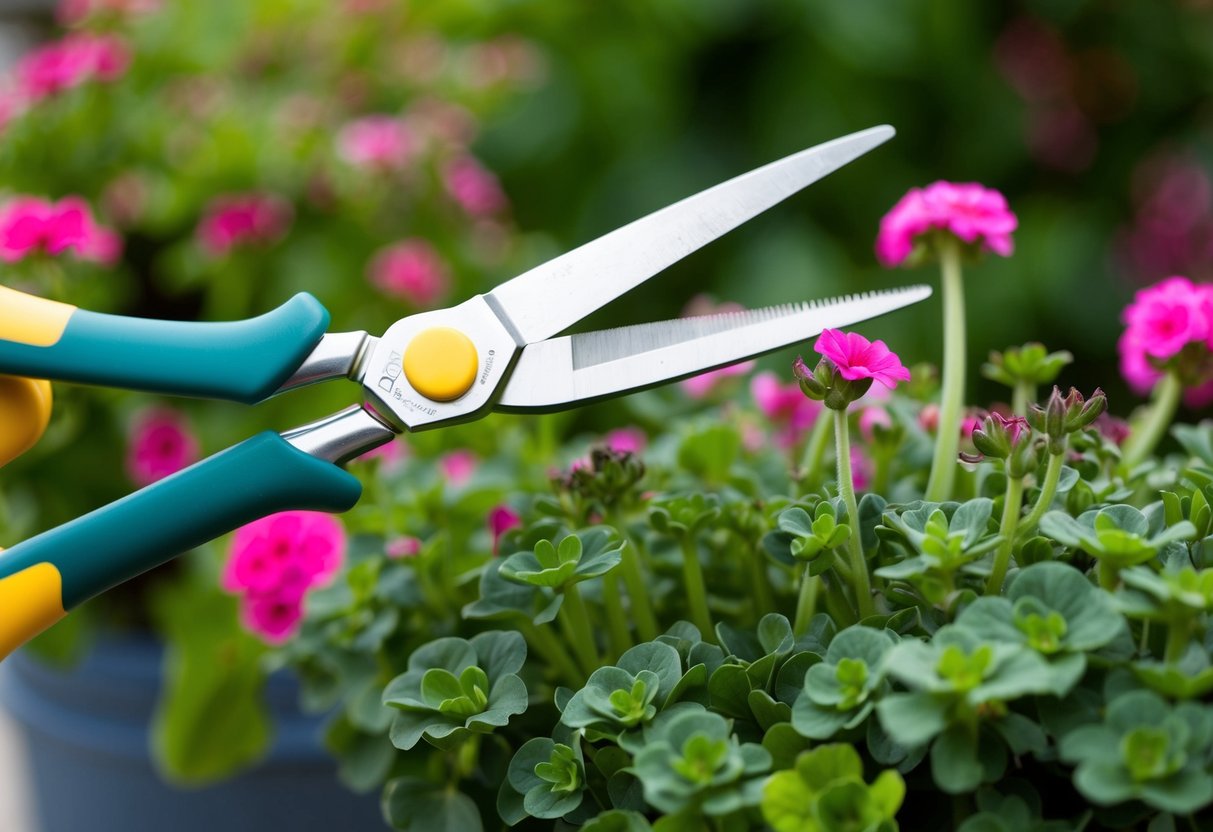
Cutting back geraniums can greatly improve their health and appearance. By trimming these plants, you can stimulate new growth and enjoy a fuller display of flowers. This practice also helps enhance sunlight exposure and air circulation, which are key to a vibrant and healthy garden.
Promoting Plant Health
When you cut back geraniums, it encourages new growth, which is vital for maintaining a healthy plant. Pruning prevents the plant from becoming too leggy by controlling its shape and size. Improved air circulation through this process helps reduce the risk of fungal diseases, which can thrive in dense foliage.
By removing dead or unhealthy stems, you’re also allowing more light to penetrate the plant. If your geraniums are in a location with full sun, this added light exposure will strengthen the plant. A strong plant is better equipped to resist pests and environmental stressors.
Encouraging More Blooms
Cutting back geraniums has the added benefit of encouraging more blooms. When you remove spent flowers, or deadheading, it signals the plant to produce additional buds. This results in a more extended flowering period and a more visually appealing display.
By encouraging the plant to focus on new blooms rather than maintaining old or faded ones, you get a bushier, fuller plant. As a result, your garden will have more vibrant colors throughout the growing season. Regular pruning and deadheading are essential practices for gardeners seeking abundant and long-lasting flower displays.
The Right Time to Prune
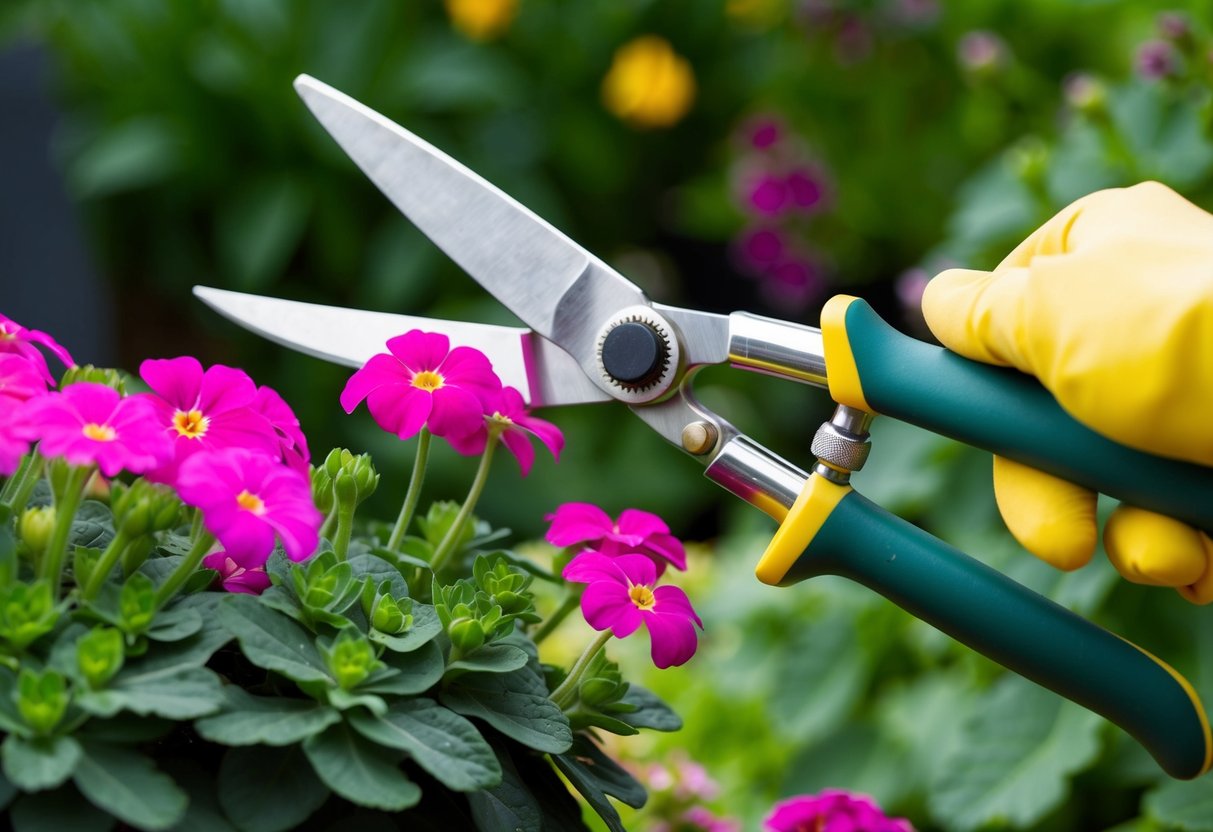
Pruning your perennial geraniums is essential for maintaining healthy growth and vibrant blooms. It involves timing, both after flowering and as winter approaches, to ensure your plants thrive.
After Flowering Ends
Once your geraniums have finished blooming, it’s important to start pruning. This keeps your plants looking tidy and prepares them for the next growth phase. Use sharp scissors to snip off spent blooms, also known as deadheading. This encourages more flowers to grow and prevents the plant from putting energy into seed production.
Check your plants for any leggy or overcrowded growth. Cutting back these parts can make your geraniums bushier and can improve airflow, reducing the chance of disease. This mid-season trim helps your plants remain strong and productive throughout the growing season. You can find more tips on how to prune geraniums at Gardener’s Path.
Preparing for Winter
As winter approaches, prepare your geraniums by cutting back about one-third of the plant. This is often done at the end of the growing season and helps get the plant ready for dormancy. Removing dead or yellow leaves is crucial, as they can harbor pests or diseases.
Trim the stems to a height of around 4 to 5 inches to protect them from harsh winter weather. This step helps maintain the overall health of your plant, ensuring a strong start when spring arrives. Be sure to mulch around the base for added protection against cold temperatures. For additional guidance, check out how to prune geraniums at Embrace Gardening.
How to Properly Cut Back Geraniums
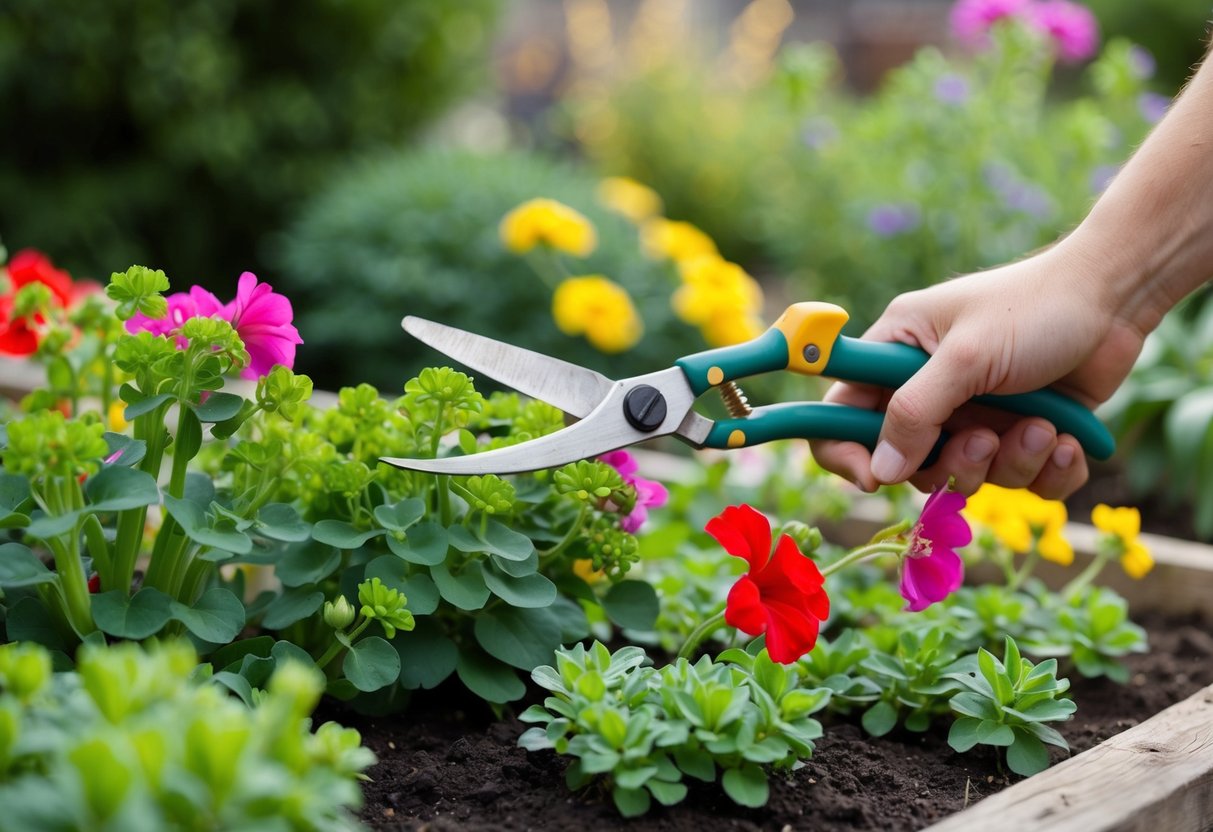
Cutting back geraniums involves more than just snipping stems. You need to sterilize your tools to prevent disease. It’s also crucial to identify specific parts like leggy growth or old foliage to encourage healthy, bushy growth.
Sterilizing Your Tools
When pruning geraniums, you should start by cleaning your tools. Dirty tools can spread diseases and harm your plants. Use a mix of one part bleach to nine parts water. Dip your scissors or pruners in the solution and let them air dry.
Keep your tools sharp to make clean cuts. This helps the plant heal faster. Use a sharpening stone if necessary. Always clean and sharpen your tools before you start, as this maintains plant health and reduces the risk of transferring pathogens.
Identifying What to Cut
Look for leggy growth that can make your plant look unbalanced. Trim back these parts to encourage a fuller appearance. Focus on cutting back about 1/4 inch above a leaf node, which will help new branches form.
Remove old foliage that has turned yellow or brown. These parts can draw energy away from the healthy parts of the plant. Be sure to also clear away any dead or dying leaves to keep your plant looking fresh and healthy.
Make sure your geraniums are planted in well-drained soil to support growth after cutting. This helps roots stay healthy and absorb nutrients more efficiently. Clear and precise pruning encourages robust and vibrant plant growth.
Post-Pruning Care and Maintenance
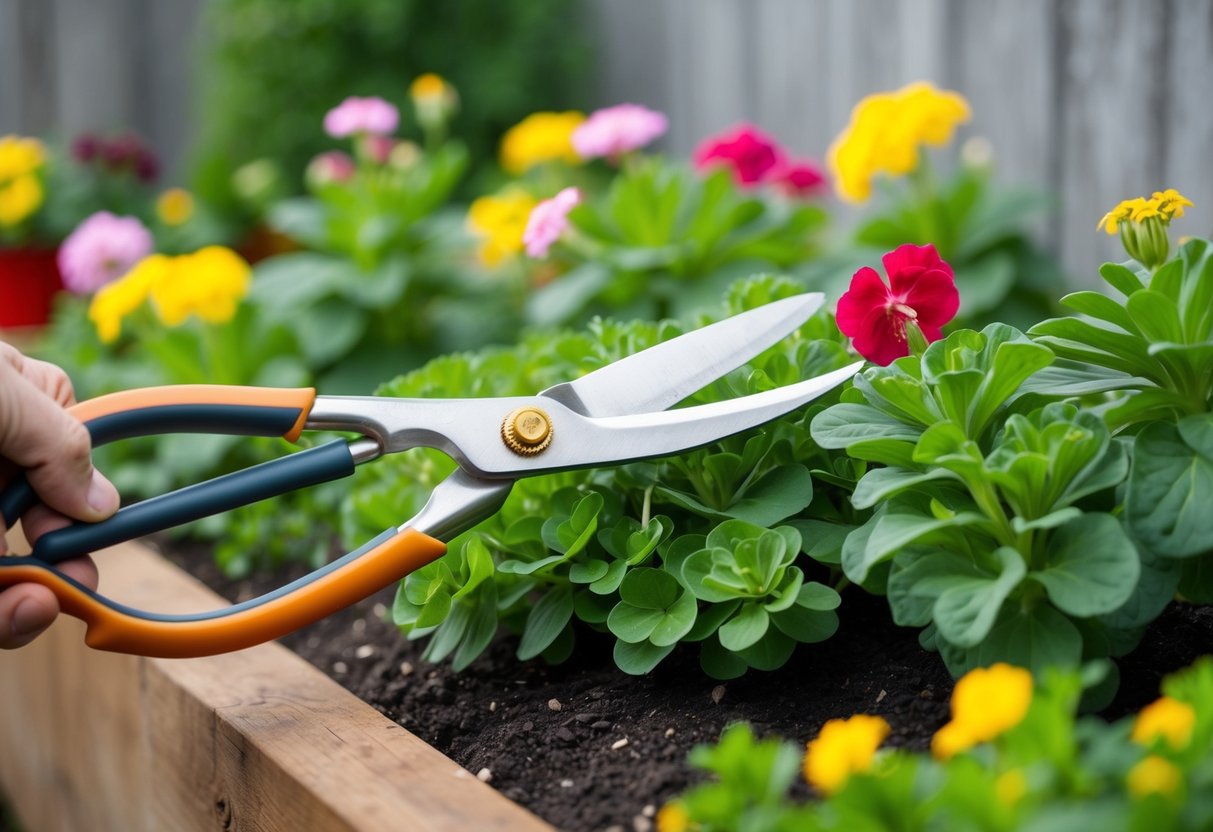
Taking care of your perennial geraniums after pruning is key to keeping them healthy. This includes ensuring they get the right amount of water and nutrients, along with protecting them from diseases.
Watering Requirements
After pruning your perennial geraniums, it’s important to manage watering. Keep the soil consistently moist but not soggy. Water deeply once or twice a week, adjusting for rainfall and humidity. Be mindful of the plant’s environment – if your geraniums are in partial shade, they may need less frequent watering.
Ensure that your soil is well-draining to prevent water from pooling around the roots, as this can lead to rot. This balance helps your plants recover quickly and thrive.
Fertilization for Growth
Fertilizing your perennial geraniums can boost their growth post-pruning. Use a balanced, water-soluble fertilizer every four to six weeks during the growing season.
If your soil is already rich, minimize fertilizer use to avoid over-fertilization, which might lead to lush foliage at the expense of blooms. Apply fertilizer when the soil is moist to avoid burning the roots. This will provide the necessary nutrients for robust flowering and healthy growth.
Disease Prevention
Preventing disease in your perennial geraniums is crucial after pruning. Remove any debris around the base of plants to reduce the risk of disease.
Ensure good air circulation by spacing plants adequately and positioning them in areas where they receive partial shade.
Check the leaves regularly for signs of pests or disease and treat immediately with appropriate solutions.
Keep the foliage dry during watering to minimize fungal issues.
By following these steps, you help protect your plants and encourage strong, healthy growth.







